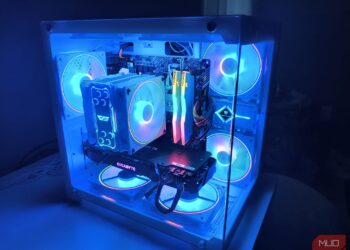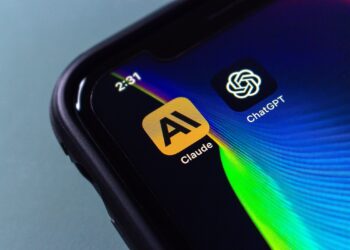Main Points
- Artificial intelligence suppresses true human creativity by diminishing authentic expression and reducing the struggle involved in creating original work.
- It leads to a homogenization of creative outputs that all appear remarkably similar, lacking in variety and uniqueness.
- AI threatens to undermine human creative abilities, potentially leading to the dismissal of skilled professionals and hindering genuine skill advancement.
With every reliance on AI to “create,” we risk losing a part of what makes our creative work distinctly ours. Are we ready to surrender our creative instincts to algorithms designed to replicate existing ideas? Personally, I believe that generative AI does not belong in creative mediums, and here’s why.
1 It Suppresses True Human Creativity
When we depend on AI for generating artwork, music, or written material, we diminish authentic human expression. Creativity is more than just arranging shapes, colors, or words; it involves conveying emotions, viewpoints, or experiences in novel ways. Relying on AI to take the lead means we miss out on this deeply personal facet of creation. Using AI is akin to having a machine color in a picture for us—quick and efficient, perhaps, but devoid of our individualized touch.
Moreover, depending on AI for inspiration may cause us to forget how to connect with our own ideas. Real creativity flourishes through exploration, messing up, and wrestling with a blank canvas or page until clarity emerges. Yet, when AI provides us with pre-packaged ideas, we forfeit that developmental struggle—the very element that propels genuine ingenuity.
Consider the contrast between traditional sketching and AI-generated art. While an artist may invest countless hours experimenting with various strokes and shading methods, acquiring wisdom from each attempt, AI users can generate many variations without truly honing any drawing skills.
2 AI Creates Dull Uniformity

A significant drawback of generative AI is its propensity to produce results that, while technically proficient, lack diversity and complexity. AI models rely on extensive datasets of existing works, hence they tend to replicate established patterns and styles. This leads to a landscape dominated by content that feels repetitive—a polished but monotonous output.
Take a look at outputs from AI art generators. You will easily notice repetitive characteristics: consistent lighting effects, similar facial structures in portraits, and that signature soft-focus background.
Inviting AI into creative applications essentially invites redundancy into realms designed for originality. Artistic expression, design, and writing flourish on the individual nuances and surprising elements that are intrinsic to human creativity. However, as AI takes center stage in what we see and consume, there’s a tangible risk that our creative output could merge into a bland repetition of past works.
3 It Undermines Human Creative Skills

The availability of AI tools for creative tasks poses a risk that human skills may be undervalued or overlooked. Creating visually appealing designs, compelling writing, or captivating illustrations once demanded years of dedicated practice, constructive feedback, and honing of techniques. However, with a mere click, anyone can produce something that resembles expert work thanks to general AI capabilities.
This decreases the value placed on creativity and can have far-reaching implications. For example, many graphic designers express concern that AI tools, such as those built into platforms like Canva or Adobe, are prompting clients to undervalue the hard work of skilled designers.
Why should businesses hire creative professionals if a computer can create logos or edit images with minimal effort? This shift in perception not only diminishes the dedication and expertise that professionals contribute but also makes it difficult for talented artists to achieve recognition for their work.
4 It Hinders Genuine Skill Development

True creative abilities aren’t developed overnight; they require years of dedication, exploration, and constructive criticism to flourish. When AI handles the challenging portions of creative tasks, the temptation becomes greater to bypass learning and let algorithms take over. The result? A diluting of skill growth.
Creating anything—be it art, music, literature, or design—requires the acquisition of techniques, the adaptation of styles, and the discovery of one’s unique voice through practice and experimentation. Leaning on AI as an easy way out not only obstructs this journey but also threatens to cultivate a generation of creators who never fully realize their potential. We may lose the opportunity for experimentation, learning from errors, and personal growth.
5 Potential for Misuse and Copyright Issues
The presence of generative AI may also encourage unethical behavior, such as plagiarism. AI systems trained on extensive datasets of preexisting works can generate content that bears close resemblance to originals, raising concerns about both intentional and unintentional copying.
Artists have expressed serious concerns over AI tools that mimic distinctive styles, making it dangerously easy for users to present AI-generated material as their own or closely replicate famous artists’ work.
This outcry has prompted platforms like ArtStation and DeviantArt to update their policies, enabling creators to opt-out of having their works used in AI training datasets. Such actions underscore the significant risks posed by AI-driven plagiarism, enabling individuals to effectively borrow a creator’s hard-earned style without any credit or acknowledgment.
The ramifications of this misuse extend beyond individual creators; they also undermine the creative community as a whole. Original works can lose value when they are overshadowed by near-identical reproductions circulating freely.
6 It Threatens Creative Heritage

Creative heritage, encompassing art, music, literature, and other cultural expressions, embodies the distinct histories, experiences, and values of various communities. By relying on AI to produce new works, we risk losing this richness.
AI systems are trained on existing data, which often portrays a limited, mainstream view of culture and creativity, frequently dominated by Western narratives. This leaves cultures that are underrepresented in these datasets vulnerable to misrepresentation or complete omission from AI-generated works.
If the role of generative AI continues to expand in creative production, these marginalized cultures risk having their heritage either disregarded or diluted by the biases inherent in AI training datasets. Consequently, this trend threatens to create a creative landscape that appears increasingly mechanized, generic, and lacking authentic cultural diversity.
While generative AI undoubtedly offers convenience and efficiency, we must be cautious of its role in creative tools and applications. Creativity is an intrinsically human endeavor—one that flourishes through emotions, experiences, and individuality. It’s crucial that we preserve the essence of human creativity and resist the temptation to allow machines to dominate.






